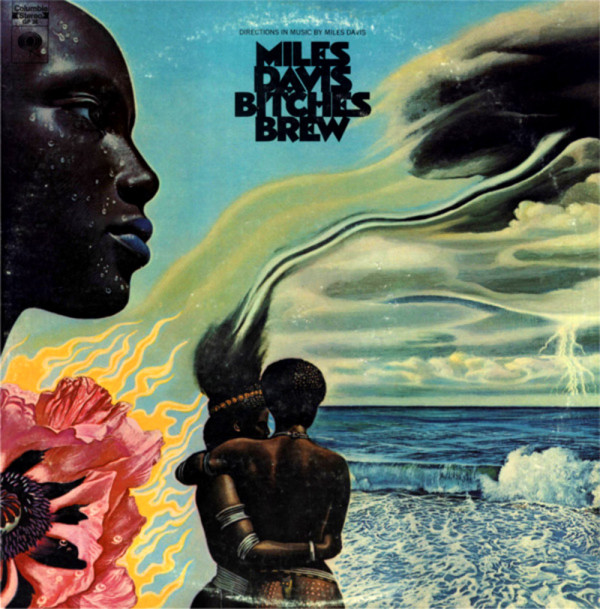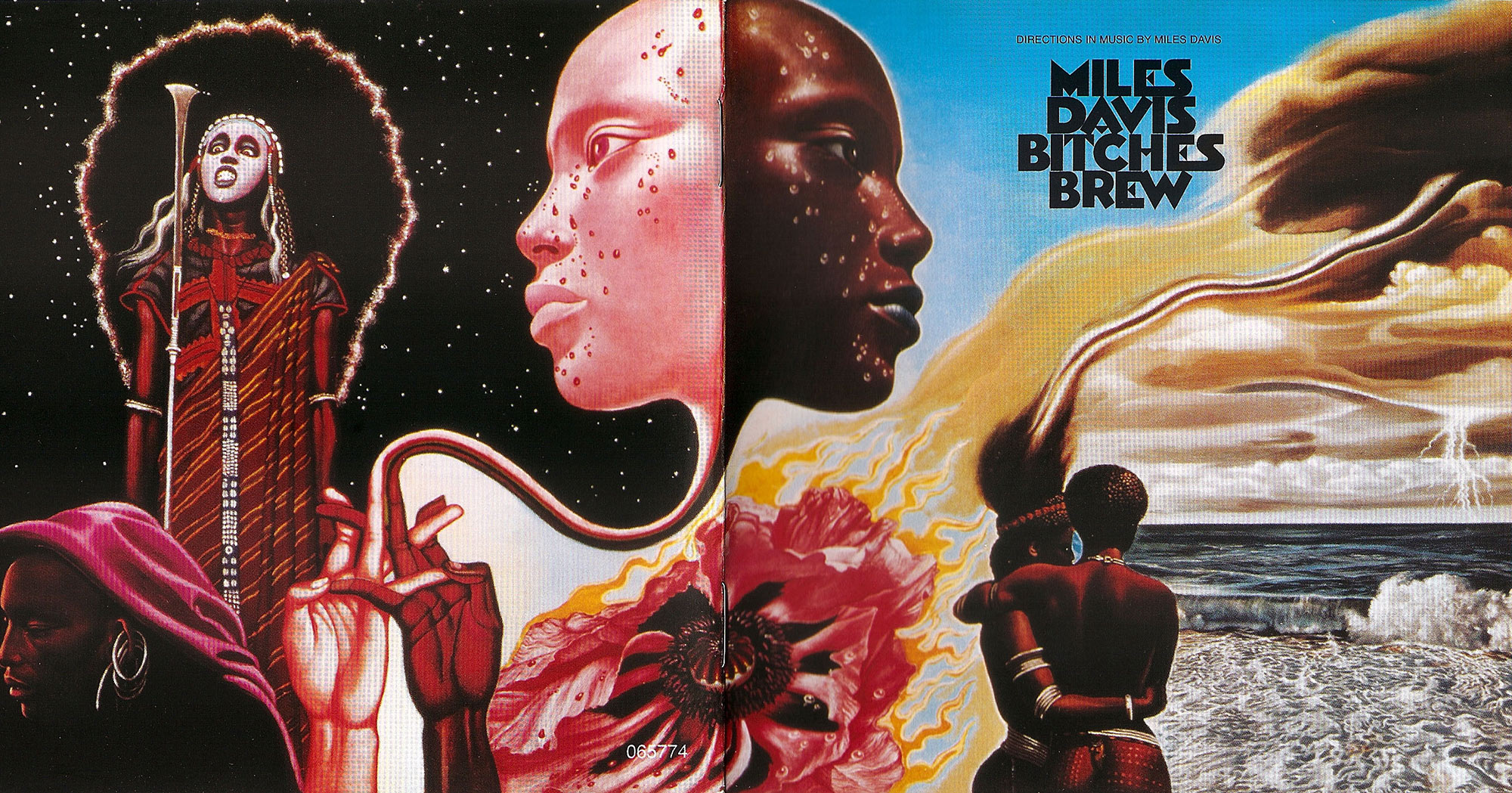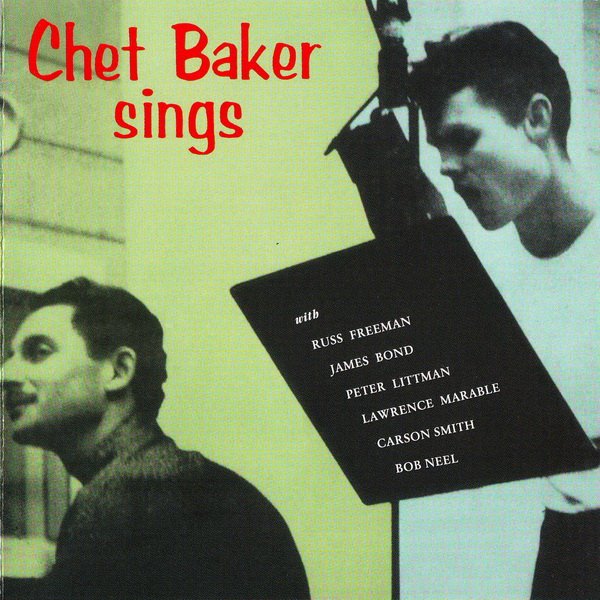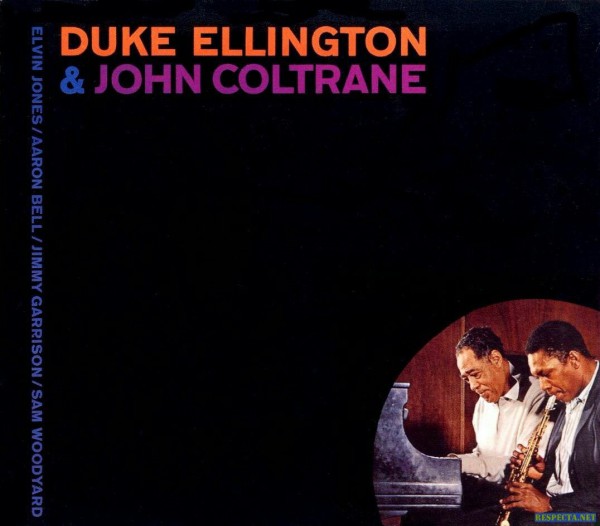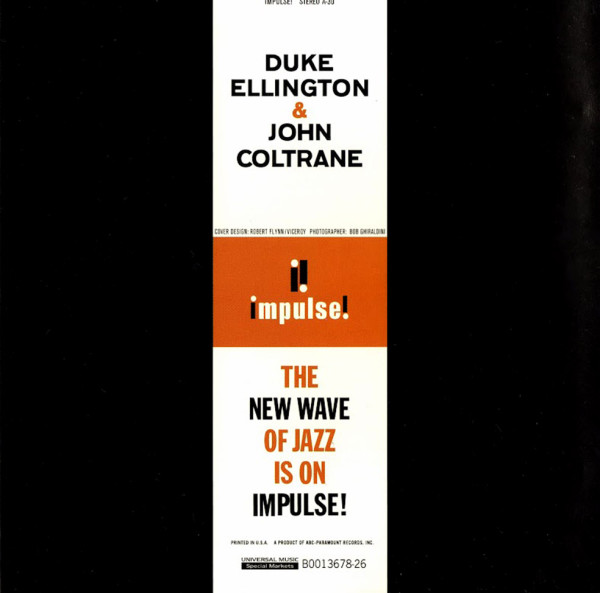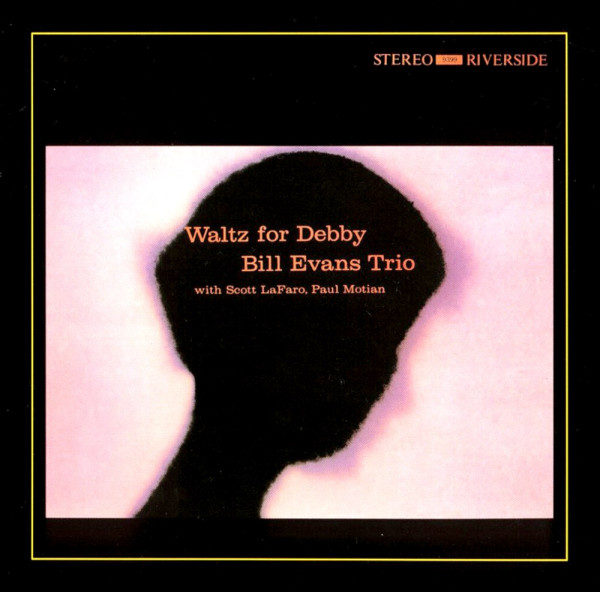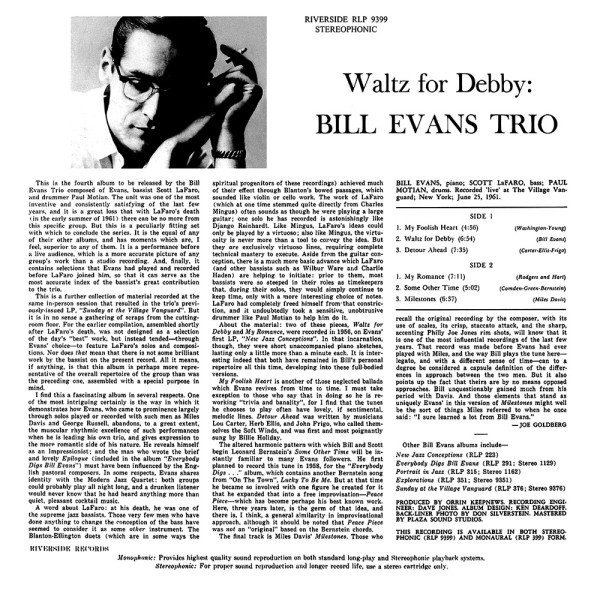This week for Vinyl Monday we dedicate our column only to remarkable Jazz sleeves. We handpicked 4 extremely influential albums from 3 different decades ranging from cool jazz to fusion, exploring the work of legendary Jazz sleeve designers such as Robert Flynn and William Claxton. The music couldn’t be more appropriate as we pin point 4 albums from the genre which bringing highly important works from jazz titans such as Bill Evans, John Coltrane, Miles Davis, Chet Baker and Duke Ellington.
1. Miles Davis – Bitches Brew
Mati Klarwein, a German painter, created the gatefold cover for the original LP, which works to not only represent the music inside, but also the thematic elements. There’s the push and pull of the light and dark worlds Klarwein depicts on the cover, part examination of racial tensions, part illustrated depiction of jazz fusion, where seeming opposites are brought together to form a new whole. While it’s easy to see this album cover as an exercise in contrasting opposites to expose contradictions and illuminate similarities, Bitches Brew, the music and the cover art, is more about tandems than dichotomies, about how shared experience coupled with the acknowledgement of individual perspectives can create an otherworldly experience — and what could be more otherworldly than the 20-minute “Pharaoh’s Dance” that opens up this album? After all, jazz music has long been about (as much as a very broad genre label can be about anything) how disparate elements can be connected through creativity and imagination.
The contrasting images that adorn the cover — the heads, the hands, the scenery — also seem to foreshadow much of the critical reaction to the record. Some saw the album as Davis abandoning his jazz roots, adopting “white” rock music signifiers for commercial success. Others saw the album as a way forward, with Davis navigating the shifting political climate through bursts of electric guitar and piano. “Forward” may be the best word to describe what was happening with this album: There’s a sense of movement and significance throughout the record, and Klarwein’s cover hints at the creation (or destruction) of worlds and histories, of reinterpreting how we view boundaries, be they social, political, or musical. The art aims for monumental, as if Bitches Brew is a historical landmark, a reading made all the more poignant by that tiny byline above the album’s title: “Directions in Music by Miles Davis.” A fitting description for an album and artist that mapped out the possibilities of genre experimentation in the early ’70s. (via Esquire)
Year: 1970
Label: Columbia Records
Artwork: Mati Klarwein
2. Chet Baker – Chet Baker Sings
William Claxton is highly regarded for his photographs of the 1950s jazz scene as he is for his album designs.In 1952 in Los Angeles he met Richard Bock who was about to launch Pacific Jazz. Claxton was recruited as a partner and the new company´s art director and photographer. Photography was Claxton´s main love, but he designed numerous album covers for the label over the six next years. He also worked for most of the other companies in the Los Angeles area, notably Contemporary Records, and for New York labels such as Riverside and Atlantic.William Claxton´s early works were dominated by black and white photography, which often were moody and melancholy. His photographs of the young Chet Baker are iconic.He later began to use colour photography and then he was responsible for giving the visual indentity to the West Coast jazz scene. His covers emphasized the informal, outdoor enjoyment of the Californian life. Claxton´s photographs are published in many books through the years, beginning already in 1955 with the classic portfolio “Jazz West Coast”, produced by Richard Bock of Pacific Jazz.
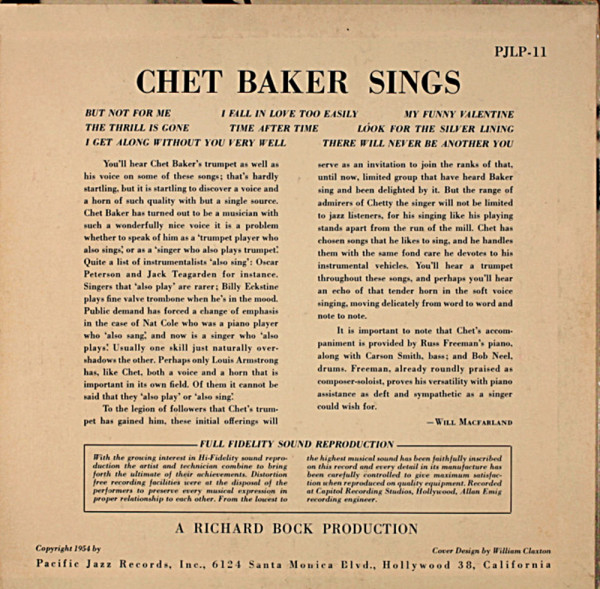
Year: 1954
Label: Pacific Jazz Records
Photography: William Claxton
3. Duke Ellington & John Coltrane – Duke Ellington & John Coltrane
Robert Flynn designed nearly all of Impulse’s covers from 1960 through 1969, staying on even after Creed Taylor’s 1961 departure to Verve Records to work well with Impulse’s new musical director, Bob Thiele, who produced the majority of albums designed by Flynn. Flynn’s style is simplicity itself. Never arty or aspiring to great art, Flynn’s designs are utilitarian and effective. Each album Flynn designed properly promotes the artist and visually delivers on the artist’s message(s). The design suggested the label without ever enforcing that this was, first and foremost, an Impulse album done by so and so, something other iconic jazz labels like Solid State and Mainstream (and later, Groove Merchant) got completely wrong. Flynn’s flair for typography and color was inspired and always seemed motivated by the music without ever locking Impulse into stylistic guidelines. Still, from the multi-colored Helvetica faces used early on to the trippy pop-art faces of the later records, Impulse retained its own personality.
Year: 1963
Label: Impulse Records
Art Direction: Robert Flynn
Photography: Bob Ghiraldini
4. Bill Evans Trio – Waltz For Debby
Recorded at the Village Vanguard in 1961, shortly before Scott LaFaro’s death, Waltz for Debby is the second album issued from that historic session, and the final one from that legendary trio that also contained drummer Paul Motian. While the Sunday at the Village Vanguard album focused on material where LaFaro soloed prominently, this is far more a portrait of the trio on those dates. Evans chose the material here, and, possibly, in some unconscious way, revealed on these sessions — and the two following LaFaro’s death (Moonbeams and How My Heart Sings!) — a different side of his musical personality that had never been displayed on his earlier solo recordings or during his tenures with Miles Davis and George Russell: Evans was an intensely romantic player, flagrantly emotional, and that is revealed here in spades on tunes such as “My Foolish Heart” and “Detour Ahead.” There is a kind of impressionistic construction to his harmonic architecture that plays off the middle registers and goes deeper into its sonances in order to set into motion numerous melodic fragments simultaneously. The rhythmic intensity that he displayed as a sideman is evident here in “Milestones,” with its muscular shifting time signature and those large, flatted ninths with the right hand. The trio’s most impressive interplay is in “My Romance,” after Evans’ opening moments introducing the changes. Here Motian’s brushwork is delicate, flighty and elegant, and LaFaro controls the dynamic of the tune with his light as a feather pizzicato work and makes Evans’ deeply emotional statements swing effortlessly. Of the many recordings Evans issued, the two Vanguard dates and Explorations are the ultimate expressions of his legendary trio. (via Allmusic.com)
Year: 1961
Label: Riverside Records
Art Direction: Ken Deardoff
Photography: Don Silverstein
This selection is brought to you by Arara: a creative & production studio run by Malu Barretto, Rodrigo Peirão and Pedro Igor Alcantara located in Rio de Janeiro, follow them on instagram @ararainc.


